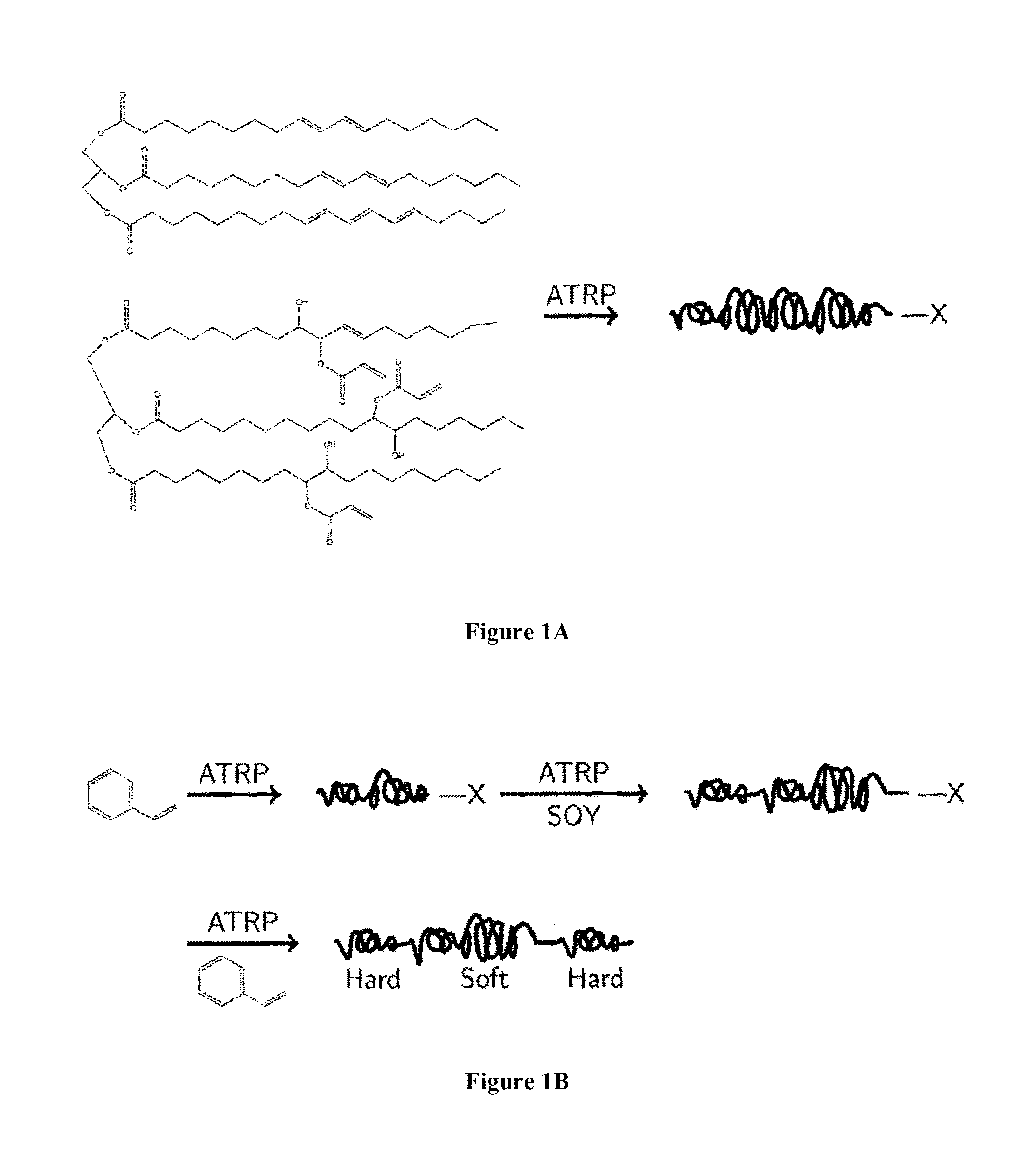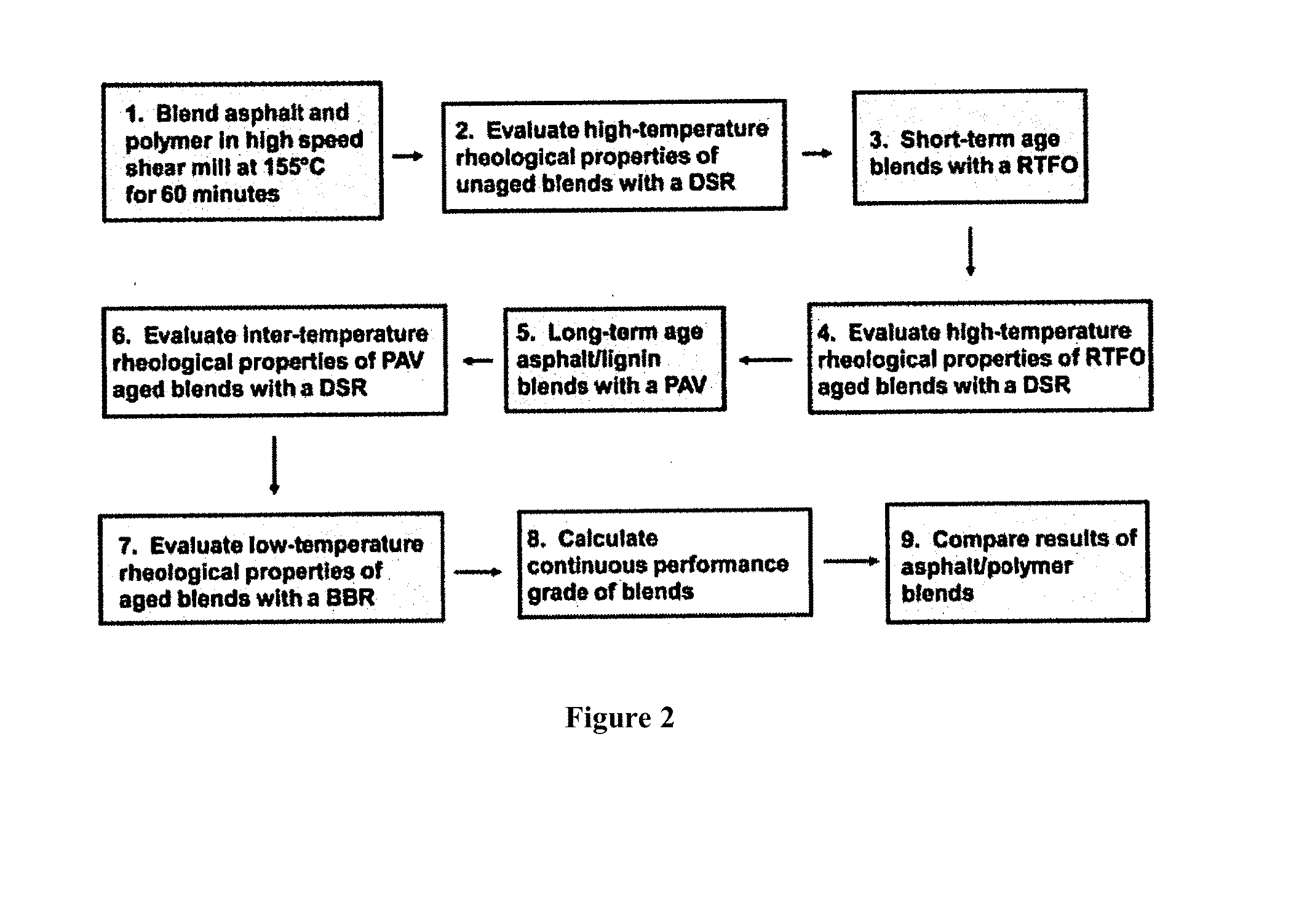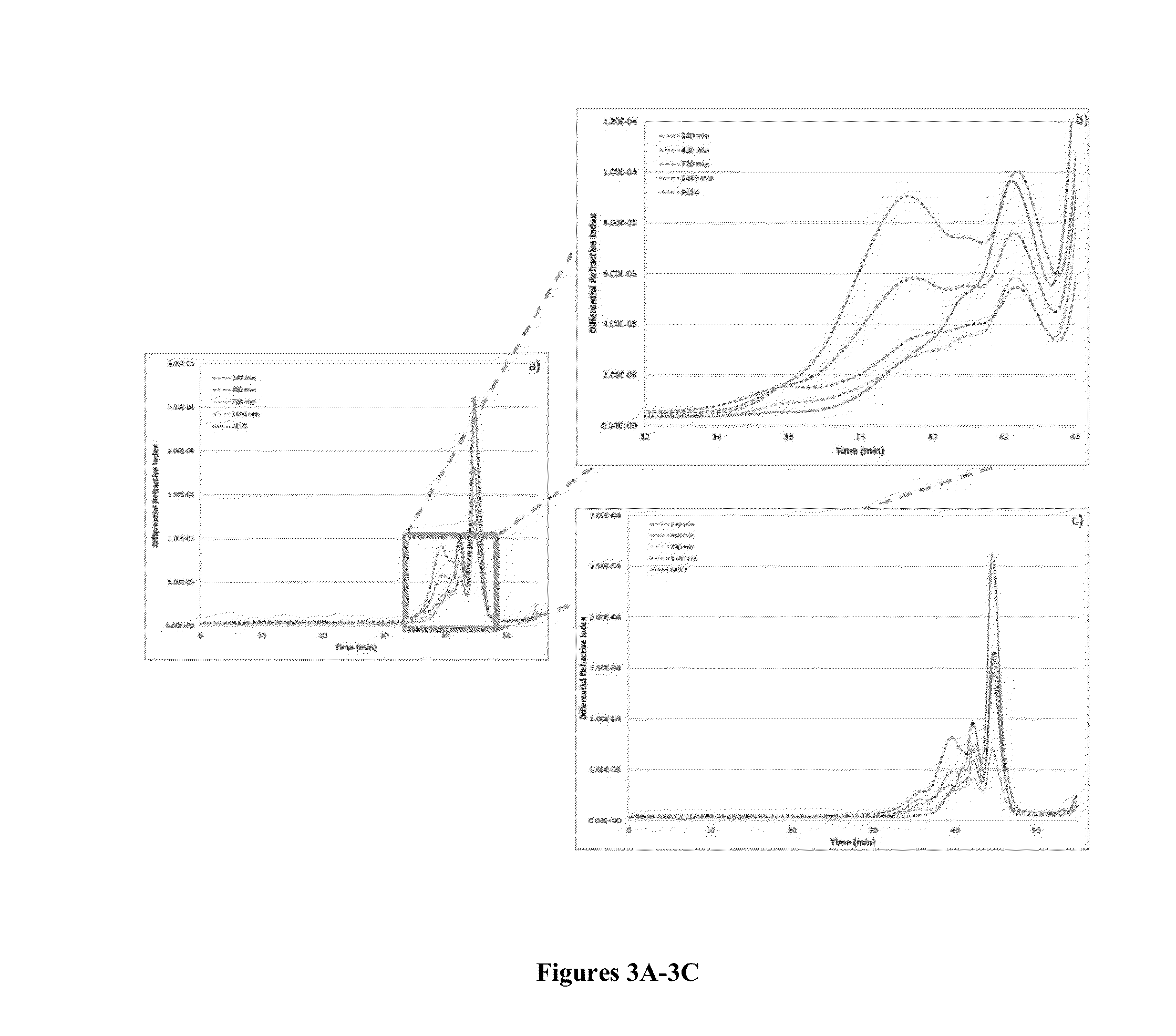Thermoplastic elastomers via atom transfer radical polymerization of plant oil
a technology of thermoplastic elastomers and plant oil, applied in the direction of in situ paving, adhesives, roads, etc., can solve the problem of shortage of sbs polymers for the asphalt industry, and achieve the effect of high cost competitiveness and cost-effectiveness of vegetable oil monomers
- Summary
- Abstract
- Description
- Claims
- Application Information
AI Technical Summary
Benefits of technology
Problems solved by technology
Method used
Image
Examples
example 1
Synthesis of poly(Acrylated Epoxidized Soybean Oil-Block-Styrene) (PAESO-PS) via Atom Transfer Radical Polymerization
[0122]Benzyl chloride (BCl), copper(II) chloride (CuIICl2), and N,N,N′,N″,N″-pentamethyldiethylenetriamine (PMDETA) were purchased from Aldrich Chemical and used without further purification. Copper(I) chloride (CuICl) was purchased from Aldrich Chemical and purified with acetic acid. Acrylated epoxidized soy bean oil (AESO) was purchased from Fisher Scientific, dissolved in high-performance liquid chromatography (HPLC)-grade tetrahydrofuran (THF) and purified over basic alumina and inhibitor removers (Aldrich product No. 311332). Prior to use, THF in AESO was removed via rotary evaporation and the monomer AESO was degassed using three freeze-pump-thaw cycles. HPLC-grade toluene was purchased from Fisher Scientific, purified over basic alumina, and degassed prior to use. Styrene was purchased from Fisher Scientific and purified by three freeze-pump-thaw cycles followe...
example 2
General Synthetic Procedures for Preparation of Poly(Acrylated Epoxidized Soybean Oil) (PAESO) via Atom Transfer Radical Polymerization
[0129]10 g AESO (CAS #91722-14-4) and 20 g HPLC-grade THF were mixed and passed through a chromatography column packed with basic alumina and inhibitor removers (Sigma Aldrich product No. 311332). THF was removed using rotary evaporation. The AESO was then subjected to three “freeze-pump-thaw” cycles. In each cycle, the AESO was frozen under vacuum over liquid nitrogen in a vacuum flask and allowed to thaw. This process removes any dissolved gasses. 10 g HPLC-grade toluene was degassed in the same manner. 10 g AESO and 10 g toluene were then added to a 50 ml round-bottom flask in an Argon-filled glove box. To this mixture 16.9 mg BC1 (50:1 molar ratio of AESO monomer to the initiator), 13.2 mg CuICl (1:1 molar ratio of initiator to catalyst), 23 mg PMDETA (1:1 molar ratio of ligand to catalyst), and 1.8 mg CuIICl2 (10:1 molar ratio of catalyst to cou...
example 3
General Synthetic Procedures for Preparation of Poly(Styrene-Block-Acrylated Epoxidized Soybean Oil-Block-Styrene) (PS-PAESO-PS) via Atom Transfer Radical Polymerization
[0131]10 g styrene (Sigma-Aldrich) was subjected to three “freeze pump-thaw” cycles followed by stirring over 10 mmol dibutyl magnesium and by subsequent vacuum distillation. The purified styrene was then polymerized via ATRP using the benzyl chloride / CuCl / PMDETA system following the procedures described in the literature (Matyjaszewski et al., “Controlled / “Living” Radical Polymerization. Kinetics of the Homogeneous Atom Transfer Radical Polymerization of Styrene,”Journal of the American Chemical Society 119(4): 674-680 (1997), which is hereby incorporated by reference in its entirety). The product had a yield of 8.3 g PS—Cl, and was characterized by SEC to have Mn,S=24.7 kDa and PDIs=1.057. See FIG. 10.
[0132]A catalyst / ligand solution was prepared by adding 1.35 g CuICl and 1.73 g PMDETA into a 100 mL volumetric fla...
PUM
| Property | Measurement | Unit |
|---|---|---|
| molecular weight | aaaaa | aaaaa |
| Tg | aaaaa | aaaaa |
| Tg | aaaaa | aaaaa |
Abstract
Description
Claims
Application Information
 Login to View More
Login to View More - R&D
- Intellectual Property
- Life Sciences
- Materials
- Tech Scout
- Unparalleled Data Quality
- Higher Quality Content
- 60% Fewer Hallucinations
Browse by: Latest US Patents, China's latest patents, Technical Efficacy Thesaurus, Application Domain, Technology Topic, Popular Technical Reports.
© 2025 PatSnap. All rights reserved.Legal|Privacy policy|Modern Slavery Act Transparency Statement|Sitemap|About US| Contact US: help@patsnap.com



